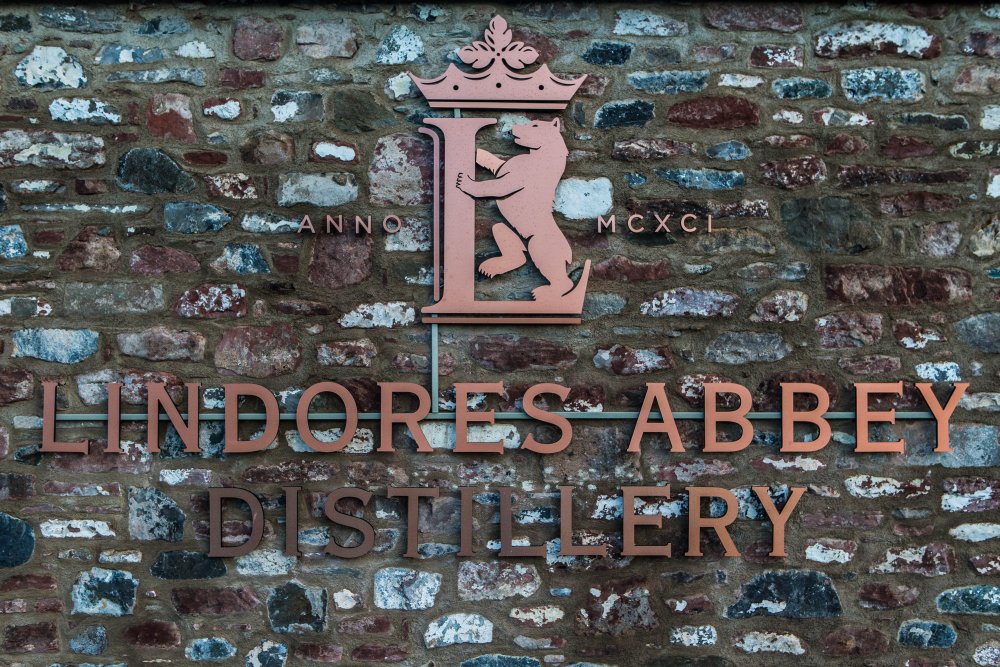"To brother John Cor..."
The name of the Lindores Abbey appeared when a "spiritious beverage" that might well be whisky was mentioned for the first time. In 1494, the royal tax accounts from the time of King James IV from Scotland (1473-1513) document the sale of barley malt to Jon Cor, a monk from the Lindores Abbey so that he could distil "Aqua Vitae" from it.
“To Brother John Cor, by order of the King, to make aqua vitae VIII bolls of malt” (Rotuli scaccarii regum scotorum Vol X, p. 487)
Eight "bolls of malt" (seed vessels of malt) will produce about 1,500 bottles of today's whisky.
Lindores Abbey or "The Church at the Water" was founded in 1191 by David Earl of Huntingdon on the southern banks of the River Tay where the river opens to the sea in a large estuary. The land was a present by his brother, King William I.
Legend has it that the Earl of Huntingdon was caught in a severe storm on his return from a crusade to the Holy Land. After his ship had survived the storm, he built the abbey to show his gratitude. At least this is what Sir Walter Scott ("Ivanhoe") tells in his famous book "The Talisman".
The monastery was built of local red sandstone and owned a large area of land. The monks who built and then managed the monastery belonged to the Benedictine Order of the Tironsians (from the Abbaye de la Sainte-Trinité de Tiron, near Chartres). Their Scottish mother house was the Kelso Monastery.
Monastic life: a variety of skills
In its prime, about 30 monks lived at the monastery, working as masons, burners, brewers, carpenters, blacksmiths, sculptors, painters, gardeners, beekeepers, farmers and cattle breeders. The monks cleared the land and planted huge orchards with apple, pear and plum trees. At 30 hectares, it was the largest orchard in Scotland. The monks of the abbey were also known for their medical skills and the abbey maintained extensive trade links that reached as far as Flanders on the European continent. Salmon from the River Tay, wool and fruit were sold or exchanged for tapestries and silk.
The Abbot of Lindores ruled over the surrounding land and communities, definitely following secular rules and exercising full jurisdiction. From 1266 the city of Newburgh also belonged to his territory. The abbey was rich and owned real estate in Scotland and in England which brought rent.
The monks also felt a mission to educate and to pass on their knowledge. Their work included copying and illustrating books and manuscripts. One of the monks, Thomas Wode, collected religious music. His collection, the "Wode Psalter", survived and is now kept at St. Andrews University.
In its prime the Lindores Monastery was widely known and attracted many famous visitors, including kings, queens, military leaders and statesmen such as Edward I of England, John Balliol, David II, James III and IV. And William Wallace ("Braveheart") the Scottish fighter for independence and 300 of his men took refuge in the monastery after defeating the English in the "Battle of Black Earnside".

Memorial plaque
In the 16th century, in the course of the Reformation movement, the abbey was raided twice, in 1543 and again in 1559. After the second attack which was directed by the reformer John Knox, most of the buildings were destroyed and then used as a quarry. A lot of stones, artefacts and works of art found its way to the houses of bordering communities.
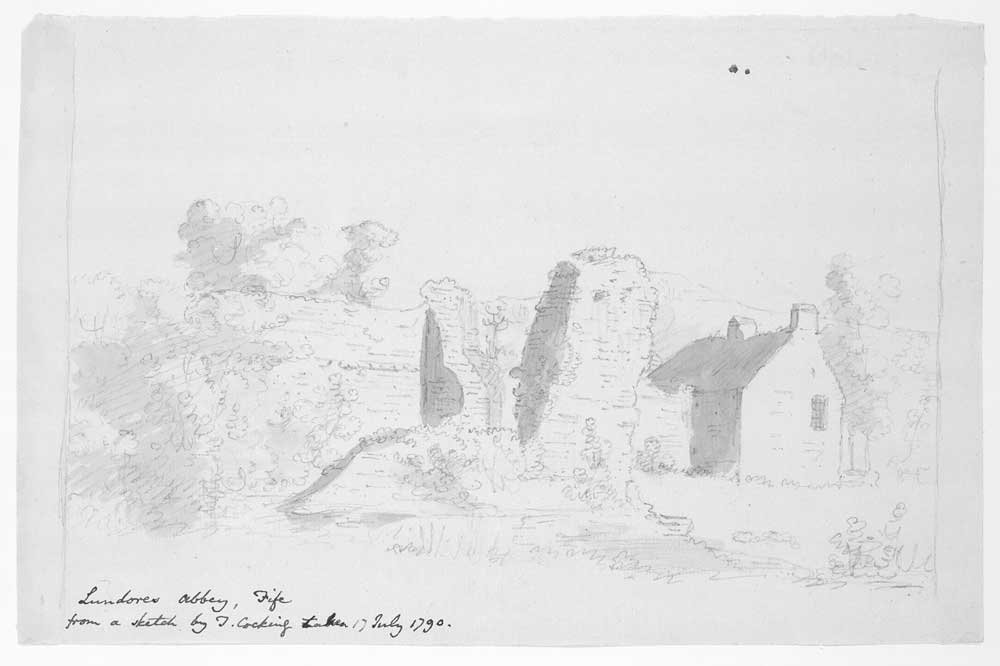
Old drawing of the ruin| Source: Scottish National Gallery
Building a new distillery
In 1913 Ian Howison bought the site of the former abbey for 3,000 pounds to live there with his wife and their ten children. After his death his descendants continued to live there and today the fourth generation of Howisons lives at the former abbey.
Ian Howison's grandson Drew McKenzie-Smith had the idea to revive the old whisky tradition and built a new distillery at the birthplace of Scotch whisky and in 2016 the construction of the new distillery began.
But first archaeologists examined the site and in the course of this work part of the 500-year-old ground plan of the monastery was found and preserved. In 2018, a medieval kiln lined with clay was discovered. Residues of charcoal, barley, oats, wheat and ceramics from the Middle Ages indicated that it was indeed part of a medieval whisky distillery.
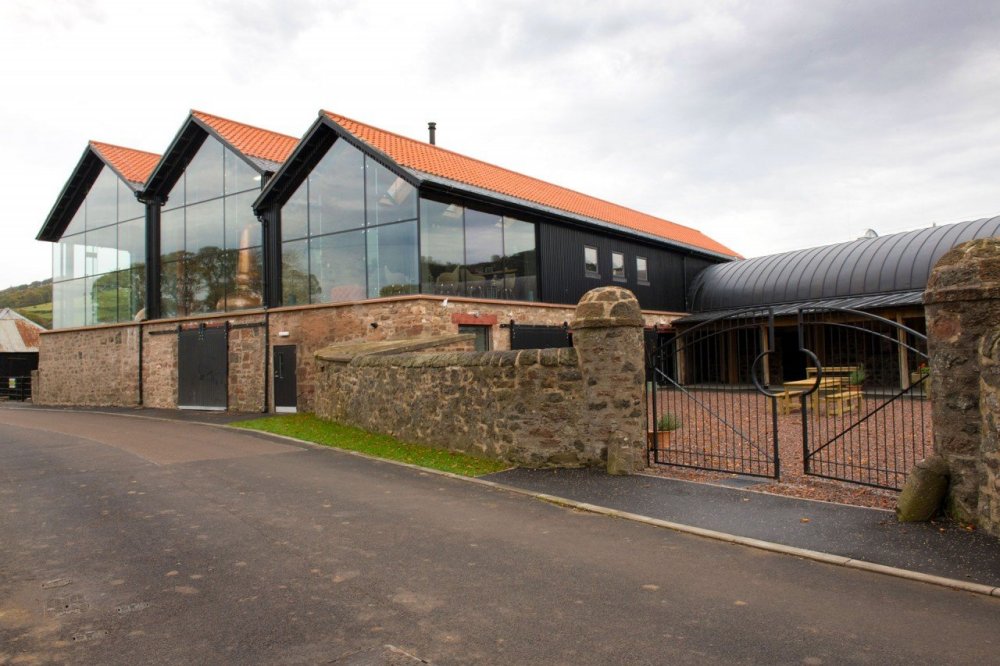
The new distillery | Photo: Lindores Abbey Distillery
In 2017 the new distillery could begin with its production. However, as Scotch whisky needs some time to mature (according to law a minimum of three years) some time will pass before the first glass of the new whisky from the Lindores Abbey can be tasted. After all, good Scotch whisky needs more than three years to mature, usually a minimum of twelve years in barrels. Until then the Lindores Abbey Distillery produces "Aqua Vitae", a kind of gin that does not need such a long time to mature.
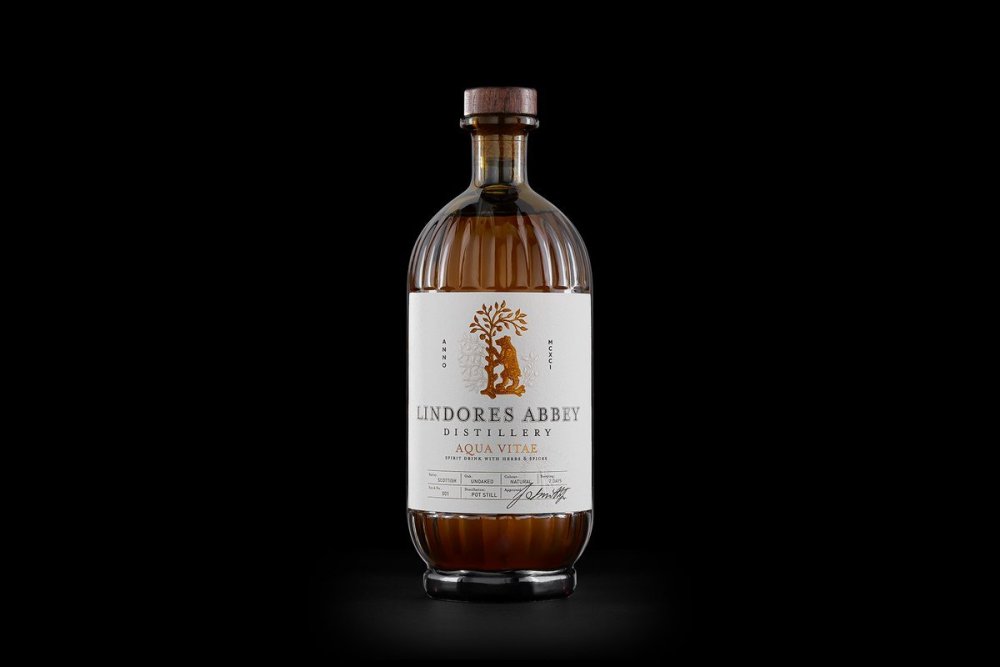
Aqua Vitae | Photo: Lindores Abbey Distillery
But you can already order the whisky by subscription. Though you have to be ready to wait a couple of years until the whisky is ready to be filled into bottles.
And chess!
Whisky has a long tradition but so has chess. In fact, chess tradition is longer, in Scotland anyway but also in Lindores. An inventory list of the monastery from the 15th century includes a chess set. And not that far from Lindores, about 250 km away from the northwest coast of Scotland is the Isle of Lewis where the Lewis Chessmen were discovered in 1831 after a storm. The 78 pieces are the oldest complete set of pieces of a European chess set and probably were made in Norway in the 12th century.
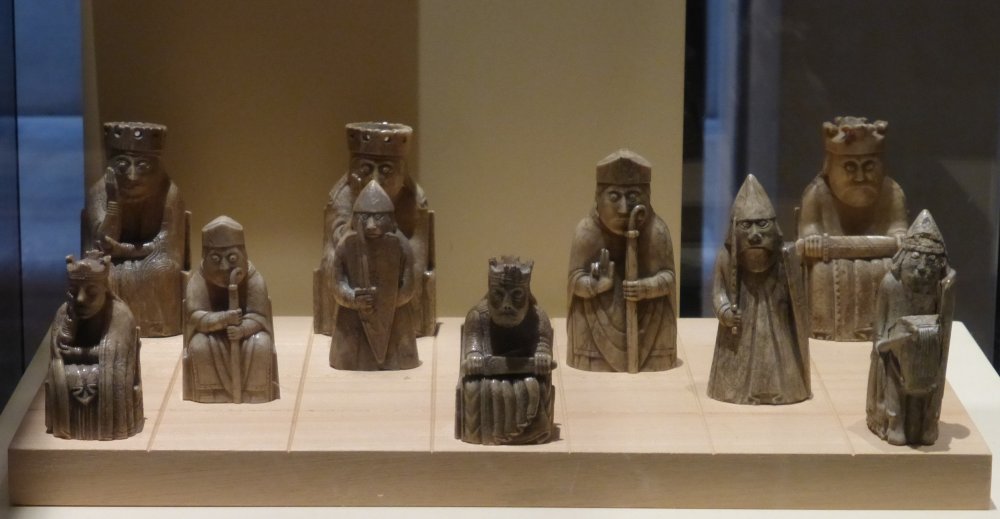
After 500 years chess returns to Lindores
After 500 years chess returns to Lindores with the "Chess Stars Tournament" that will be played in the distillery and that brings top players such as Magnus Carlsen, Vishy Anand, and Ding Liren to the former monastery.
On the occasion of the event the distillery sells an 18 months old "Aqua Vitae Spirit", the Lindores Abbey Thabill", in a limited edition of 500 bottles. Part of the proceeds of this sale and the sale of entry tickets will go to a charity for orphans.
However, entry tickets are also limited: each day only 70 seats are available, each seat costs 20 pounds per day.
Lindores chess site with ticket request...
Lindores Abbey Road. When Google took a picture of the street the distillery was not yet built.
Translation from German: Johannes Fischer
Links
